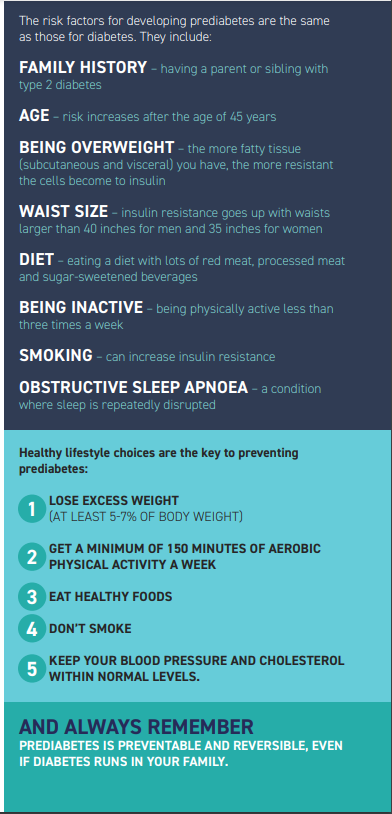IN CREW WATCH WE ARE ALWAYS LOOKING AT WAYS TO RAISE AWARENESS ABOUT HEALTH – ENCOURAGING YOU TO KEEP AN EYE ON YOUR OWN HEALTH AND TO LOOK OUT FOR THE HEALTH AND WELLBEING OF YOUR FELLOW CREW.
IN THIS ARTICLE WE LOOK AT DIABETES AND PARTICULARLY PREDIABETES – THE EARLY SIGNS OF DIABETES - AND WE SET OUT WHAT YOU CAN DO TO STAY AS HEALTHY AS POSSIBLE. OUR AIM IS NOT TO SCARE YOU BUT TO MAKE YOU AWARE THAT SOMETIMES QUITE SMALL CHANGES TO YOUR LIFESTYLE CAN HAVE A MAJOR POSITIVE IMPACT ON YOUR HEALTH.
DIABETES
is a health condition which affects many of us and is often caused by not caring for your body properly through poor diet and a lack of exercise. Type 2 is by far the most common type of diabetes. The amount of sugar in the blood is controlled by a hormone called insulin, which is produced by the pancreas (a gland behind the stomach). When food is digested and enters your bloodstream, insulin moves glucose (blood sugar) out of the blood and into cells, where it's broken down to produce energy. However, if you have diabetes, your body is unable to break down glucose into energy. This is because there's either not enough insulin to move the glucose, or the insulin produced does not work properly.
PREDIABETES
is a health condition where the blood sugar levels are elevated but not high enough to be diagnosed as Type 2 diabetes. Most people with prediabetes (as much as 85%) are not aware that they have the condition. However, if left untreated, prediabetes can lead to Type 2 diabetes, heart disease, kidney disease and stroke.
People with prediabetes no longer process sugar (glucose) normally. In prediabetes the cells do not respond as well to insulin. When the cells do not respond to it, sugar fails to enter the cells causing the sugar levels in the blood to rise.

Source: Brittania P&I
